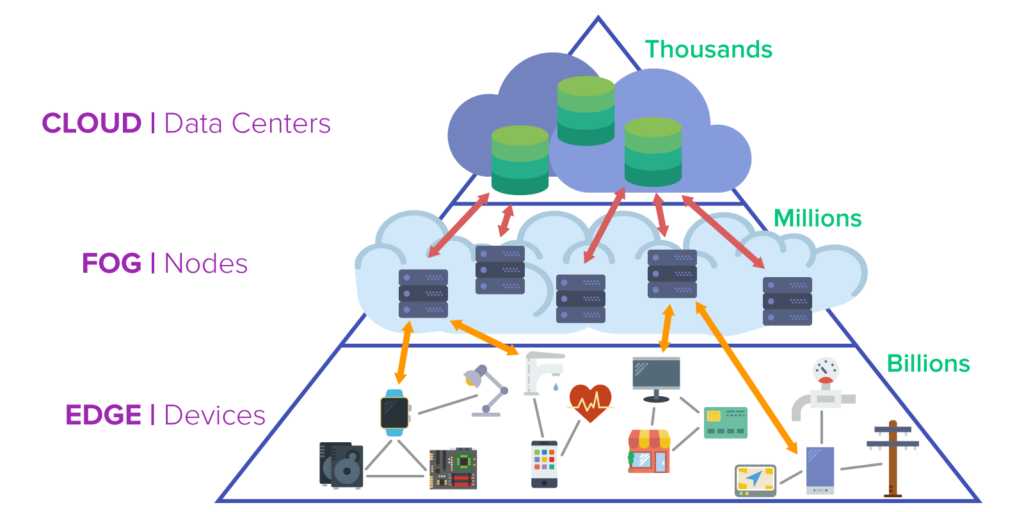The main difference between cloud and edge computing is in the mode of infrastructure. Edge computing can also help prevent overloading network backbones by processing more data locally and sending to the cloud only data that needs to go to the cloud.
Neutral IDC in Asia with over 33000 Sqm of telecom and computer room floor space.

What is edge cloud. This proximity to data at its source can deliver strong business benefits including faster insights improved response times. Edge computing would then be processing the data from the action as close to the source as possible. Edge Computing vs Cloud Computing.
Traditionally the computing power of servers is used to perform tasks such as data minimisation or. What is the Edge. Ciena defines the Edge Cloud as an interchangeable cloud ecosystem encompassing storage and compute assets located at the edge and interconnected by a scalable application-aware network that can sense and adapt to changing needs securely and in real-time.
The Edge Cloud is the federation of the data center nodes along with all the edge zones. People may use terms such as edge networks cloud edge fog and even IoT interchangeably and in some cases this might be accurate. In simple terms edge computing places more of the workload locally where the data is first collected rather than on the cloud itself.
It brings data storage and compute power closer to the device or data source where its most needed. Edge computing is a kind of expansion of cloud computing architecture - an optimized solution for decentralized infrastructure. There could also be security privacy and data sovereignty advantages to keeping more data close to the source rather than shipping it to a centralized location.
VMware Telco Cloud solutions for Telco Edge VMware Telco Cloud enables CSPs to have the freedom to build and deploy any applications in any cloud from the core datacenter to the telco edge while maintaining the highest level of consistency for infrastructure operations and developer experience. Faster time to market lower TCO. Simply put the cloud is comprised of physical computer hardware that is connected to tangible cellular networks that connect to enterprise or personal devices closest to the user or the.
Key Differences The term Edge computing refers to computing as a distributed paradigm. At the edge of the network. Edge computing is computing thats done at or near the source of the data instead of relying on the cloud at one of a dozen data centers to do all the work.
An Edge Cloud architecture is used to decentralize processing power to the edges clientsdevices of your networks. An edge cloud is hosted on an edge server acting as a micro-data center to bring analytics and AI closer to the people and processes that need them. As its name suggests Edge Computing aims to place more of the burden of data processing closer to the source of the data ie.
Most enterprises will benefit from a combination of cloud computing plus edge deployments for real-time responses and experiences. A simple definition for the edge is where actions are happening. Home Resources What is Edge Cloud.
Ad Premier Facility Carrier Neutral ISO 27001 27011 27017 27018 and DCOS-4 Certified. Edge computing was developed due to the exponential growth of IoT devices which connect to the internet for either receiving information from the cloud or delivering data back to the cloud. Edge computing is a distributed computing framework that brings enterprise applications closer to data sources such as IoT devices or local edge servers.
Information is not processed on the cloud filtered through distant data centers. Bringing computation to the networks edge minimizes the amount of long-distance communication that has to happen between a client and server. In simpler terms edge computing means running fewer processes in the cloud and moving those processes to local places such as on a users computer an IoT device or an edge server.
The Edge Cloud operator is assumed to have a pre-existing. Instead the cloud comes to you. It doesnt mean the cloud will.

